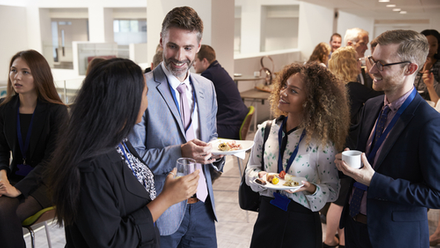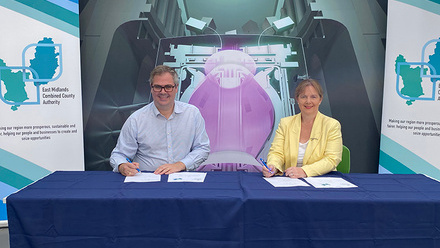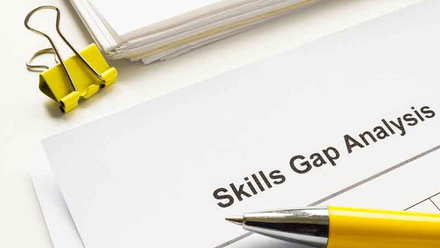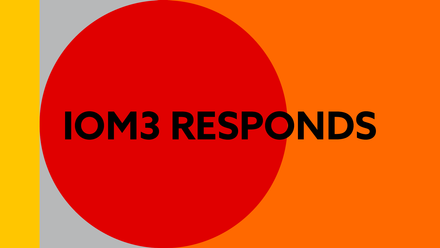Geopolitics, Materials, Minerals and Mining
SEC Committee members contemplate how the current world climate impacts upon each of our sectors.
SEC Committee members contemplate how the current world climate impacts upon each of our sectors.
Ollie Thomas | University of Oxford
Geopolitics and its consequences on supply chains and regional technologies is something I often find myself reflecting on, or at least every time I write a grant application or funding proposal. My research focuses on the development of novel cathodes for sodium-ion batteries, a field which is largely predicated on the need to move away from Li-ion batteries and the rare elements contained therein.
Cobalt is the classic example, the foundation of current cathode technologies this element is predominantly mined in the democratic republic of Congo where artisanal mining practices raise ethical concerns and political instability in the region threatens supply chain security. Supply chain fragility was felt in a very real way in recent years as the outbreak of conflict in Ukraine resulted in a spike in Nickel prices, another key element, and delays in the lithium supply chain with our research lab spending weeks without vital resources due to delays on order fulfilment. Even ‘next generation’ low cost technologies such as LFP face concerns with approximately 70% of phosphorous, a key element in LFP, originating from sub-Saharan Africa, and the battery supply chain having to compete with the very growing need for phosphorus as a component of fertilizer.
Far from portending the downfall of battery energy storage these concerns have sparked a wave of research and innovation around the world, exploring innovative solutions to realise a plurality of technologies such as sodium, magnesium, and zinc batteries along with alternate technologies such as redox-flow batteries and even hydrogen storage. Such a plurality of technologies would enable each region and application to use the technology most appropriate for them. Such a diversification will also lead to energy storage becoming more affordable and thus accessible to those who might otherwise be unable to afford state of the art Li-ion systems.
Between conflicts and import tariffs geopolitics and the impact it has on all our lives is more visible than ever. Thus, given the importance of the topic to my own area I thought to ask my SECC colleagues how world events impact their areas of work in materials, minerals, and Mining.
Dr Michael Kenyon MIMMM | – Vice-Chair, SEC Group
My career began in technical research focused on metallic systems. However, my PhD incorporated a sustainability theme, allowing me to explore the environmental impacts of the materials sector. As global attention increasingly turns toward addressing climate change and other environmental challenges, I chose to pivot from technical materials research to a career in environmental quantification. I now apply my materials expertise to help businesses assess and reduce the environmental impacts of their products and operations. This role has also exposed me to a wide range of innovative materials and industries, many of which I would not have encountered through a traditional research path.
Materials science is increasingly being shaped—both academically and industrially—by the climate crisis and broader environmental impacts. I find the technical challenge of delivering environmentally focused projects and guiding clients on how best to reduce their impact both engaging and meaningful. Looking ahead, the need to monitor, reduce, and mitigate environmental impacts across business and society will remain critical.
It will be fascinating to look back in 2050 and assess whether the world has met the environmental targets set in recent years. In the meantime, I remain committed to supporting the materials sector in reducing its environmental impact, with the hope that my work can contribute meaningfully to mitigating and managing the damage being done to our plan
Olivia Anderson | Loughborough University
Recently, there has been extensive media coverage on global tariffs imposed by Trump’s administration on imported goods. Following tariffs set in 2018, which saw aluminium and steel derivative products charged 10 % and 25 % ad valorem, an extension set in March 2025 saw an increase for aluminium products to match steels, overwriting pre-existing trade deals and exemptions.
Applied to all countries bar Russia, this has had a major knock-on effect for the aluminium smelters, foundries, mills and manufacturers of aluminium derivative products who import large quantities of goods to the US.
For Russian “smelted and cast” aluminium, and aluminium derivative products, the 200 % duty rate placed in 2023, responding to the ongoing conflict in Ukraine, is still held. This hiked duty has increased the need for all members of the aluminium cycle to re-evaluate their supply chains and opt for materials with a lower import cost - of non-Russian origin.
Furthermore, these tariffs have highlighted a lack of awareness of the aluminium cycle amongst decision makers in manufacturing companies. Ore to alloy is not a straight line, therefore, materials scientists are needed in consulting roles to seek alternative alloy supply chains where required.
The existing motivation for increasing the visibility of supply chains is Scope 3 emission reduction (indirect greenhouse gas emissions upstream and downstream), is now supported by the financial incentive of tariffs for all supplier tiers, increasing the urgency of investigations, and hopefully sparking innovation.
Antonia Fan CEng CSci MIMMM | BAE Systems
Since graduating in 2019, I have worked on the Shipyard in Barrow-in-Furness. Having gained a broad foundation of knowledge across the Engineering disciplines, I moved into the Materials Technology department where I am responsible for material selection and protective coatings.
The marine environment presents many challenges, one of which is corrosion. However, with challenge comes opportunity. In this technical role, I am able to influence design decisions, present risk-based arguments to support the critical build path and lead research into novel solutions through collaborations across industry and academia.
The maritime industry is navigating a period of change, driven by technological advances against a backdrop of environmental regulation and evolving market demands. The rush to meet global sustainability goals has turbocharged innovation across the sector. To decarbonise steel production, electric arc furnaces are being developed in the UK. Paint manufacturers are formulating solvent free coatings in an effort to reduce volatile organic compounds, and reduce hazardous substances which can negatively impact human health and aquatic species. Opportunities also exist in the field of composites and additive manufacturing which can offer lightweight strength, durability and corrosion resistance.
With capital investment in downstream operations, in parallel with upskilling and training the next generation, the materials world will continue to be an ever growing space.
Dr Matthew Wadge MIMMM | Manchester Metropolitan University
In today’s complex geopolitical landscape, no sector, within academia or industry, remains untouched, though the impacts vary in scope and intensity. However, in complex climates, there are always opportunities. As a materials scientist in academia focusing on healthcare, medical devices and surface engineering, I have observed increasing pressure around access to critical raw materials, particularly titanium (Ti), which remains a cornerstone of orthopaedic applications. The widespread use of Ti and more specifically its alloys (e.g. Ti6Al4V) in medicine can be traced back to their post-war adoption in aerospace applications during the 1950s onwards, followed by the recognition of their biocompatibility and mechanical advantages for orthopaedics. Today, however, rising trade restrictions and supply chain constraints are prompting a shift, not necessarily toward new materials, but away from those that are geopolitically sensitive. This has accelerated interest in novel, locally sourced, and sustainable alternatives. At the same time, expanding collaborations beyond traditional US and EU partners, so as to not be reliant on single country partners, has opened access to unique resources and fostered innovation through diverse scientific perspectives. In response, I have diversified my research in both material selection, applications and international collaboration. Having previously relied heavily on Ti and its derivatives, I am now developing surface treatments using naturally derived materials, such as polydopamine and chitosan, in conjunction with my previous work. These efforts are supported by new multidisciplinary, multinational partnerships in South Korea, Italy and the US, as well as diversification of my research applications to incorporate sustainable energy storage and material recycling, which have proven particularly fruitful in sustaining research momentum amid global uncertainty. These transitions have not only enabled continuity in my work but have also sparked new directions for biomaterials innovation at my institution; something to remain positive about amongst so much angst and uncertainty.











